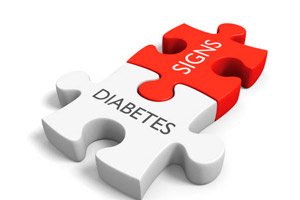
All iLive content is medically reviewed or fact checked to ensure as much factual accuracy as possible.
We have strict sourcing guidelines and only link to reputable media sites, academic research institutions and, whenever possible, medically peer reviewed studies. Note that the numbers in parentheses ([1], [2], etc.) are clickable links to these studies.
If you feel that any of our content is inaccurate, out-of-date, or otherwise questionable, please select it and press Ctrl + Enter.
Prediabetes is especially dangerous for 20-54 year olds: large US study
Last reviewed: 18.08.2025
 ">
">Prediabetes is an intermediate state when blood sugar levels are already higher than normal, but not yet reaching type 2 diabetes (in the study - HbA1c 5.7-6.4% or self-report). It is known as a risk factor for future diabetes and cardiovascular problems. But does prediabetes itself increase the risk of death - or is it age, lifestyle and concomitant diseases that "spoil" everything? The authors tried to separate these factors. The study was published in the journal JAMA Network Open.
The scale of the problem
We are talking about tens of millions of adults. Many of them are unaware of their prediabetes because it rarely causes symptoms. For health systems, this is a “window of opportunity”: interventions at the prediabetes stage (weight control, exercise, nutrition, smoking cessation) have been proven to reduce the risk of diabetes and improve cardiovascular risk factors.
Relationship to outcomes: what is known and what is controversial
Prediabetes is consistently associated with a higher risk of developing type 2 diabetes and cardiovascular events. But the picture for overall mortality is mixed. In population analyses, there is an “excess” risk of death in people with prediabetes, but this may be due to who is more likely to be in this category: older people, more likely to be obese, have high blood pressure, smoke, be less physically active, and have pre-existing medical conditions. Without these factors, it is easy to overestimate the role of prediabetes itself.
How did you spend it?
- Data: NHANES (national health surveys and health statistics) 2005–2018, with subsequent mortality tracking through the National Death Index.
- Participants: 38,093 adults; 9,971 (26.2%) had prediabetes. This corresponds to an estimated >51 million US adults.
- Models: Stepwise Cox regressions - first unadjusted, then adjusted for demographics (age, gender, race/ethnicity), then lifestyle (smoking, alcohol, etc.), then comorbidities (hypertension, heart disease, stroke, cancer, etc.). We also tested whether the association varied across ages and racial/ethnic groups.
What did you find?
- In crude data, prediabetes was associated with increased mortality: HR 1.58 (95% CI 1.43–1.74).
- But after controlling for age, gender, and race, the association weakens and turns toward neutral: HR 0.88 (0.80–0.98).
- After adding lifestyle, HR 0.92 (0.82–1.04), insignificant.
- In the fully adjusted model (demographics + lifestyle + diseases), the HR was 1.05 (0.92–1.19), meaning that prediabetes itself is not statistically associated with increased mortality.
- An important caveat: in young adults (20–54 years), prediabetes is still associated with excess mortality — HR 1.64 (95% CI 1.24–2.17). In people 55–74 and ≥75 years old, there is no significant association.
- No separate significant associations were found across racial/ethnic groups.
How should this be understood?
- In the general population, the “extra” risk of death from prediabetes is largely explained not by prediabetes itself, but by who is more likely to have it (age, gender, race/ethnicity), how a person lives (smoking, diet, alcohol, activity), and what diseases they already have (hypertension, CVD, etc.). When all this is taken into account, prediabetes ceases to be an independent “sentence”.
- The exception is young people aged 20–54: in them, prediabetes does signal an increased risk of death. Possible explanations discussed by the authors include a more aggressive course of metabolic disorders in some people, late diagnosis, barriers to access to medical care, risky behavior, and stressors of this period of life.
What does this mean in practice?
- Prediabetes screening and early intervention are particularly important in young and middle-aged adults. This is the group where “prediagnosis” carries real additional risk.
- Prevention programs should be flexible: online formats, mutual support groups, linking to work/study, short intensive courses - anything that increases the involvement of 20-54 year olds.
- In the clinic, it is reasonable not to limit oneself to the label “prediabetes”, but to aggressively manage modifiable factors: weight, movement, nutrition, sleep, blood pressure, lipids, smoking cessation, alcohol within the recommended limits.
- For older people, a key role is played by a package of risk factors and comorbidities - these are the ones that should be targeted by treatment and lifestyle changes.
Limitations of the study
- Observational design (cause and effect inferences cannot be made).
- Part of the variables is self-narration (risk of errors).
- Over/underestimation due to the fact that prediabetes was defined by HbA1c and self-report (not including, for example, exercise tests or fasting glucose separately).
- Despite links to mortality, the dynamics of behavioral factors over time are difficult to track.
Conclusion
In the average U.S. population, prediabetes does not increase mortality on its own, after accounting for age, lifestyle, and disease. But in people 20 to 54 years old, prediabetes is a warning sign: The risk of death is about 60% higher. The takeaway is simple: The younger the patient with prediabetes, the more prevention is worth doing right now.
